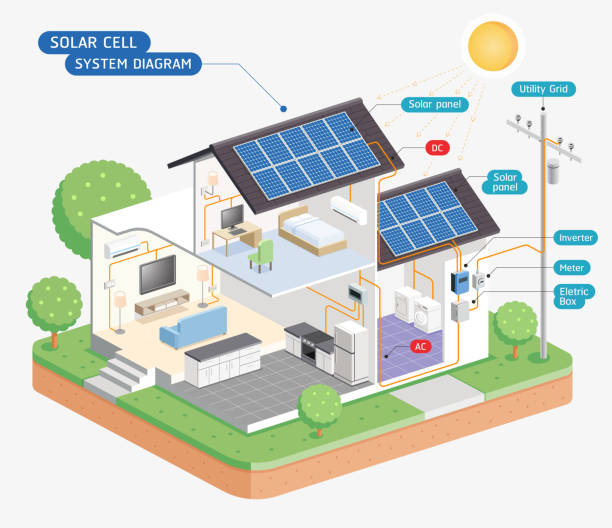Solar Panel Systems: Inverter and Monitoring Operations

Solar panel systems have become a symbol of sustainable energy and a beacon of hope in our pursuit of a greener future. But how exactly do these unassuming panels transform sunlight into the electricity that powers our homes, businesses, and communities? The answer lies in a sophisticated process that involves inverters and monitoring equipment, working seamlessly to harness the sun’s energy and optimize its utilization.
1. The Power of Photovoltaics
At the heart of every solar panel system are photovoltaic (PV) cells, composed of semiconductor materials like silicon. When sunlight strikes these cells, it triggers a phenomenon known as the photovoltaic effect. This process releases electrons, generating direct current (DC) electricity. However, the electricity produced by the PV cells is not in the form that our homes and appliances use.
2. Conversion with Inverters
This is where inverters come into play. The DC electricity generated by solar panels is converted into alternating current (AC) electricity, which is the standard form of electricity used in homes and businesses. Inverters serve as the bridge between the PV cells and our electrical systems. They perform the crucial role of transforming the raw DC power into a usable form that seamlessly integrates with our existing power infrastructure.
3. Types of Inverters
There are different types of inverters used in solar panel systems:
- String Inverters: These inverters are commonly used in residential systems. They connect multiple solar panels in a series, converting the collective DC power output of the panels into AC power.
- Microinverters: Each solar panel in a microinverter system has its own dedicated inverter. This setup allows each panel to operate independently, optimizing energy production even when some panels are partially shaded.
- Power Optimizers: Power optimizers, used in conjunction with string inverters, individually optimize the performance of each panel, mitigating the effects of shading or panel mismatch.
4. Monitoring Equipment
The efficiency and health of a solar panel system can be monitored using specialized equipment. Monitoring systems provide real-time data on energy production, system health, and efficiency. This information is valuable for identifying issues, ensuring optimal performance, and maximizing energy output. Monitoring technology can be accessed through web-based platforms or mobile apps, allowing homeowners and installers to track the system’s performance from anywhere.
5. Net Metering and Grid Integration
Many solar panel systems are connected to the electrical grid. During sunny periods when your panels produce more electricity than your home consumes, the excess power can be fed back into the grid. This is where net metering comes into play. Net metering allows you to receive credits for the excess electricity you generate, effectively offsetting your electricity bill.
Conclusion
The operation of a solar panel system, complete with inverters and monitoring equipment, is a well-orchestrated dance of science and technology. It transforms sunlight into clean, usable energy, powering our lives while reducing our carbon footprint. As technology continues to advance, solar panel systems become more efficient, accessible, and integral to the global effort to transition toward sustainable energy sources. Through the magic of photovoltaics, inverters, and monitoring equipment, we harness the sun’s energy in a way that benefits both our planet and our future.


